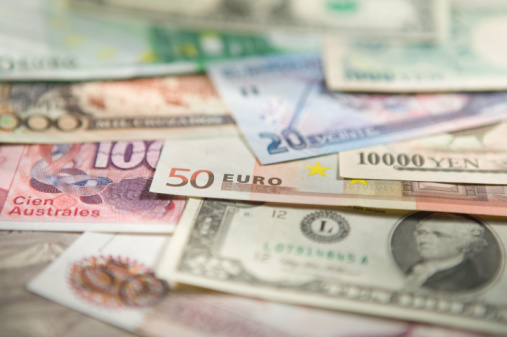 When traveling abroad, it's important to learn how to do currency conversions in your head. This is so you can figure out whether something that is priced in another currency is a good value when compared to U.S. prices.
When traveling abroad, it's important to learn how to do currency conversions in your head. This is so you can figure out whether something that is priced in another currency is a good value when compared to U.S. prices.When we honeymooned in Mexico nearly 21 years ago, we had an expensive lesson in currency conversion when we paid 150,000 pesos on the hotel's dinner buffet the first night and learned that was $50! We quickly learned to divide a peso price by 3,000 to get the US dollar price, or, when bargaining, to fix a US price in our minds and then multiply by 3 and add some zeros to know when to stop at a good deal.
For this trip, we will mostly be buying things with Euro, although there may be opportunity for other currency in Dubrovnik. On a cruise in the Baltics, we had several envelopes of currency as most of the countries we were visiting had their own currency rather than the Euro. This trip will be a lot easier.
While we know that we will have to check the exchange just before we leave, we can go ahead and start thinking about how much we want to budget for private excursions and tour guide tips, souvenirs, local food and drinks based on the US-Euro rate now so we'll know how much we'll want to exchange before we travel and after we get there.
A Google search for Currency Exchange offers a calculator such as this one as the top search result. As you can see, as of this posting, $1 is equivalent to about 0,75 Euro - or 3/4s. And in reverse, 1 Euro is approximately $1.33. So if something sells for 10 Euro, that's about $13.30, or if something we think is worth $10 and the price is 7,50 Euro or less, then that's an ok price to pay. Some people find that it's handy to make a cheat-sheet with conversions written on them so you can figure your price equivalences at a glance.
 |
| (I found this image here.) |

No comments:
Post a Comment